The Ultimate Guide to Daycare Receipts: Everything Parents and Providers Need to Know
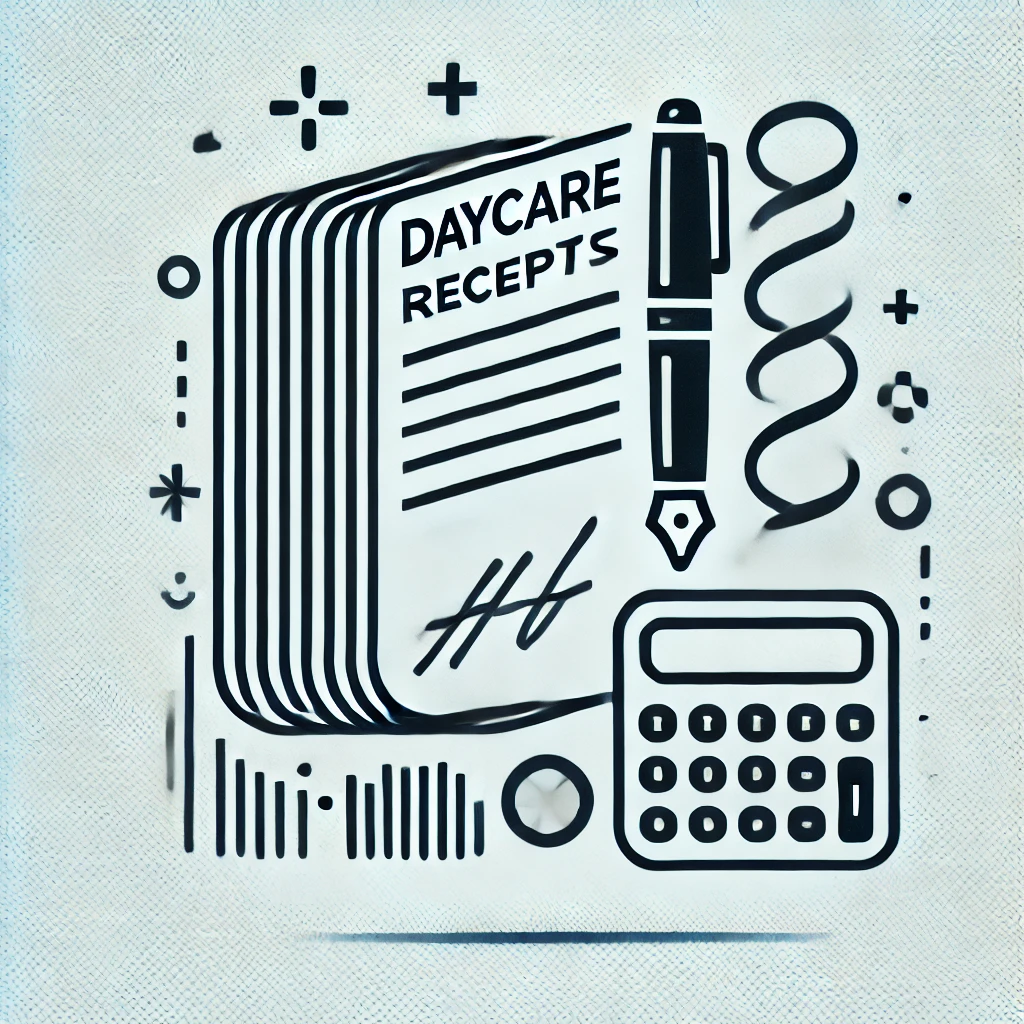
What is a Daycare Receipt?
A daycare receipt is a document that records payment for childcare services. It typically includes:
- The name and address of the daycare provider
- The name of the child or children receiving care
- The dates of service
- The amount paid
- The method of payment
- The provider’s tax identification number or social security number
The Importance of Daycare Receipts
For Parents:
- Tax Benefits: Daycare receipts are crucial for claiming the Child and Dependent Care Credit on your tax return.
- Employer Reimbursement: Many employers offer childcare benefits that require proof of payment.
- Budget Tracking: Receipts help parents keep track of their childcare expenses throughout the year.
For Daycare Providers:
- Income Tracking: Receipts help providers accurately report their income for tax purposes.
- Professional Image: Providing receipts demonstrates professionalism and organization.
- Dispute Resolution: In case of payment disputes, receipts serve as proof of services rendered and payments received.
Types of Daycare Receipts
- Daily Receipts: Issued for daily drop-in care or occasional services.
- Weekly Receipts: Common for regular, weekly childcare arrangements.
- Monthly Receipts: Often used for full-time daycare services billed on a monthly basis.
- Annual Receipts: Summarize the total childcare expenses for the year, useful for tax purposes.
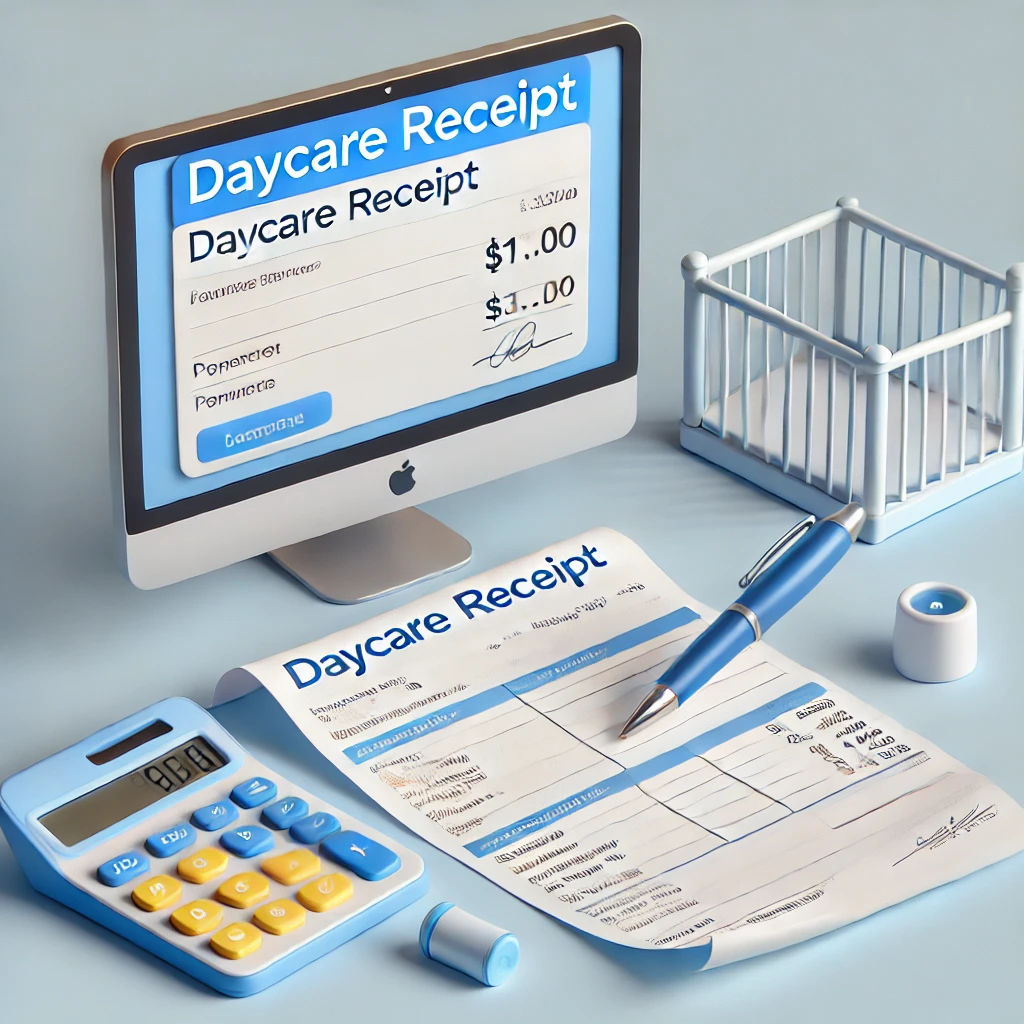
Creating a Daycare Receipt Template
Whether you’re a parent needing a sample for your records or a provider looking to streamline your process, creating a daycare receipt template can be incredibly helpful. Here’s what to include:
- Header: Your daycare’s name, address, and contact information.
- Receipt Number: A unique identifier for each receipt.
- Parent/Guardian Information: Name and contact details.
- Child Information: Name and age of the child(ren) receiving care.
- Service Details: Dates of service, type of care provided.
- Payment Information: Amount paid, payment method, and date of payment.
- Provider’s Signature: To verify the receipt’s authenticity.
- Tax Information: Your tax ID or social security number (for providers).
Daycare Receipt Template Options
- DIY Spreadsheet: Create a simple template using spreadsheet software like Excel or Google Sheets.
- Word Processing Software: Use Microsoft Word or Google Docs to design a professional-looking receipt.
- Online Template Services: Many websites offer free or low-cost daycare receipt templates.
- Accounting Software: Some accounting programs include customizable receipt templates.
- Mobile Apps: There are several apps designed specifically for creating and managing childcare receipts.
Best Practices for Daycare Receipts
For Parents:
- Request Receipts Regularly: Don’t wait until tax season to gather your receipts.
- Keep Organized: Store receipts in a dedicated folder or digital system.
- Verify Information: Ensure all details on the receipt are correct before filing.
- Understand Tax Implications: Familiarize yourself with IRS requirements for childcare expenses.
For Daycare Providers:
- Be Consistent: Use the same format for all receipts to maintain professionalism.
- Provide Promptly: Issue receipts immediately upon payment or at regular intervals.
- Keep Copies: Maintain your own records of all receipts issued.
- Use Technology: Consider digital receipt systems for easier record-keeping.
- Stay Compliant: Ensure your receipts meet all legal and tax requirements.
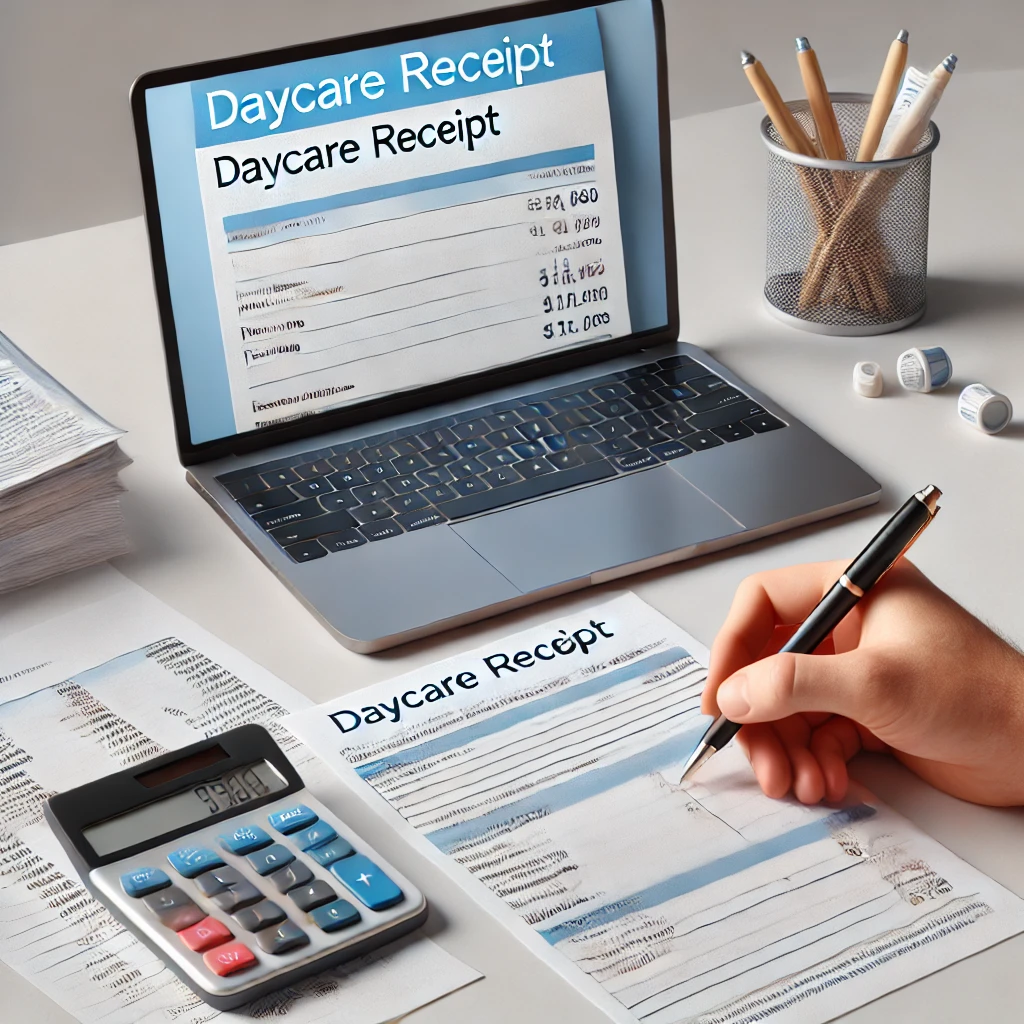
Digital vs. Paper Receipts
In today’s digital age, many are moving towards electronic receipts. Here are some pros and cons:
Digital Receipts:
Pros:
- Easy to store and organize
- Environmentally friendly
- Can be quickly emailed or shared
- Less likely to be lost or damaged
Cons:
- Require technology to access
- May not be accepted by all parents or tax authorities
- Potential security concerns
Paper Receipts:
Pros:
- Tangible proof of payment
- No technology required to access
- Generally accepted by all parties
Cons:
- Can be easily lost or damaged
- Take up physical storage space
- Less environmentally friendly
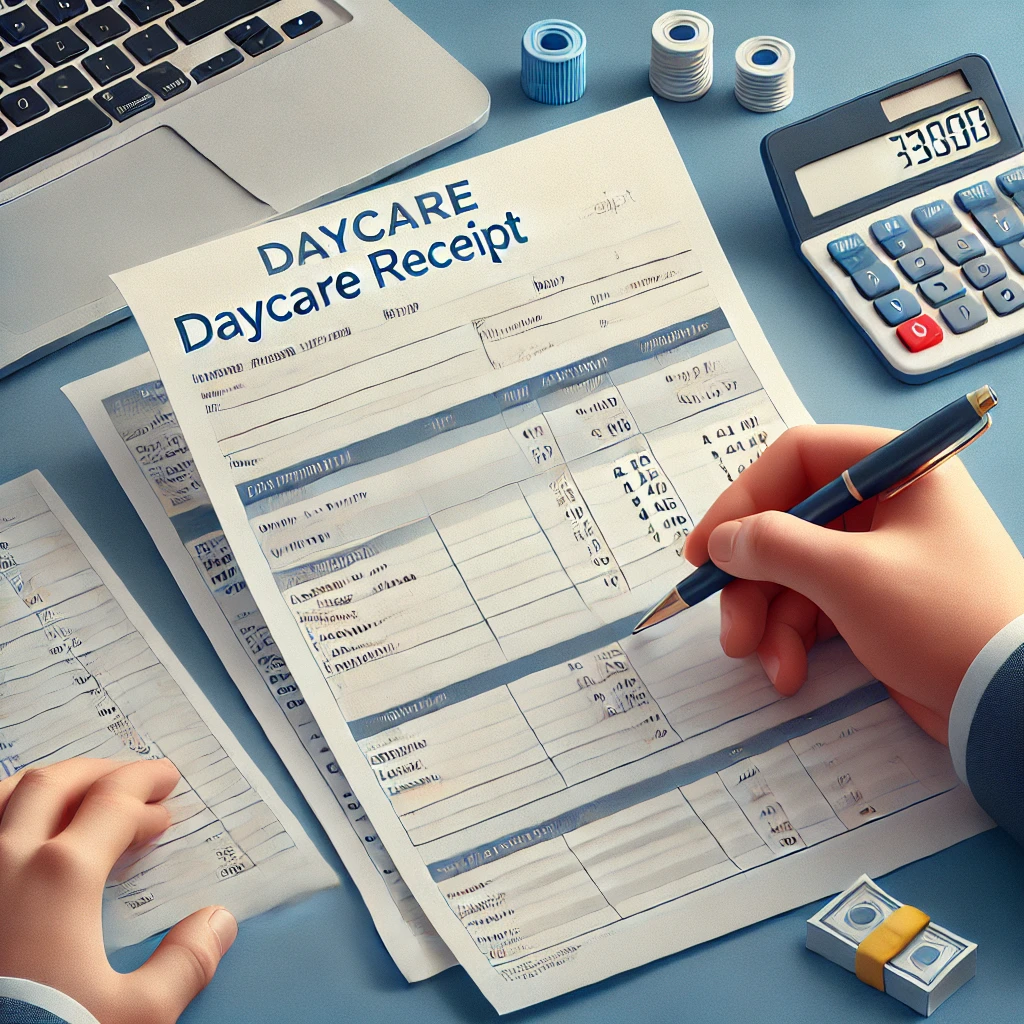
Daycare Receipt for Taxes
When it comes to taxes, daycare receipts play a crucial role. Here’s what you need to know:
For Parents:
- Child and Dependent Care Credit: This credit can significantly reduce your tax liability.
- Required Information: Ensure your receipts include the provider’s name, address, and tax ID number.
- Keep All Receipts: Even if you think you won’t qualify for the credit, keep your receipts just in case.
For Providers:
- Income Reporting: All income from childcare services must be reported on your tax return.
- Provide Year-End Summaries: Offer parents an annual summary of payments for their tax filing.
- Include Your Tax ID: Always include your tax identification number on receipts.
Common Mistakes to Avoid
- Incomplete Information: Ensure all necessary details are included on every receipt.
- Inconsistent Record-Keeping: Maintain a regular system for issuing and storing receipts.
- Waiting Too Long: Don’t delay in providing or requesting receipts.
- Ignoring Digital Options: Consider the benefits of electronic receipt systems.
- Forgetting Tax Implications: Always keep tax requirements in mind when dealing with receipts.
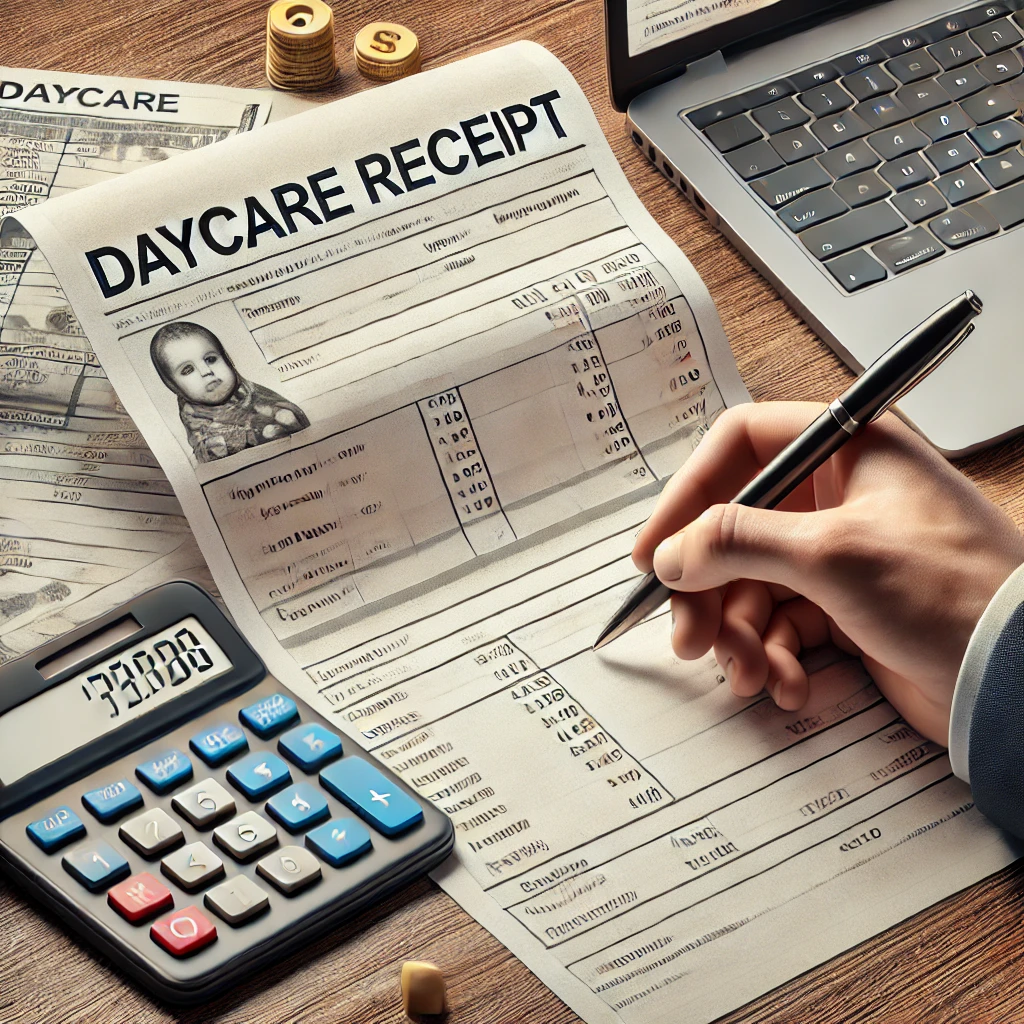
Daycare Receipt FAQs
Q: How long should I keep daycare receipts? A: It’s recommended to keep receipts for at least 3-7 years, depending on your tax situation.
Q: Can I use a handwritten receipt for tax purposes? A: While handwritten receipts are acceptable, typed or printed receipts are preferred for clarity.
Q: What if I lose my daycare receipt? A: Contact your provider for a duplicate. Many providers keep records and can issue replacement receipts.
Q: Do I need a receipt for every payment? A: Ideally, yes. Having a receipt for each payment provides the most comprehensive record.
Q: Can I use a daycare receipt template from the internet? A: Yes, but ensure it includes all necessary information required by tax authorities.
Conclusion: The Power of Proper Documentation
Daycare receipts may seem like a small detail in the grand scheme of childcare, but they play a vital role in financial management, tax compliance, and professional business practices. For parents, these receipts are key to accessing valuable tax benefits and keeping track of a significant household expense. For daycare providers, they’re an essential tool for maintaining accurate records and demonstrating professionalism.
By understanding the importance of daycare receipts and implementing best practices in creating, using, and storing them, both parents and providers can ensure smoother financial management and compliance with tax regulations. Whether you opt for a simple paper receipt or a sophisticated digital system, the key is consistency and attention to detail.
Remember, a well-organized approach to daycare receipts not only simplifies your current financial management but also prepares you for future financial planning and potential audits. In the world of childcare, where the focus is rightfully on nurturing and educating children, having a solid system for financial documentation allows both parents and providers to focus on what truly matters – the care and development of the children.
